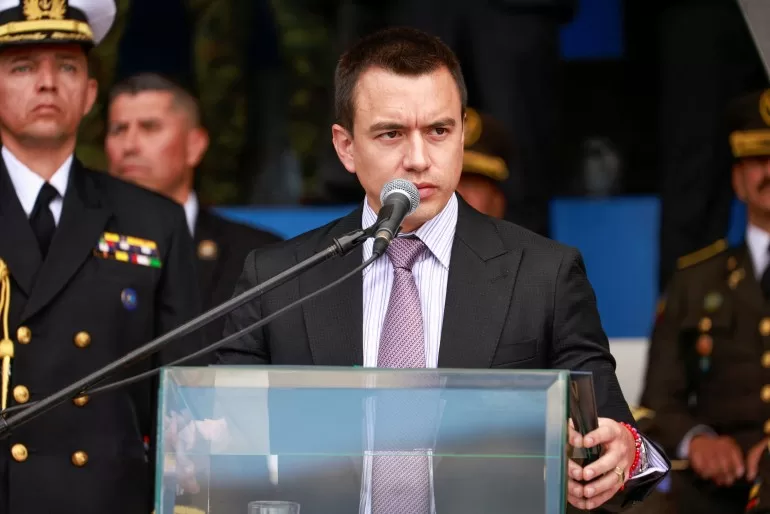“Life has changed completely. I feel fear living in Ecuador,” Guaman, who lives in the city of Cuenca, told Al Jazeera.
“I no longer answer the phone with the same confidence as before. Businesses don’t open the way they used to. [I’m scared] of not being able to continue working because someone might come to extort me.”
Guaman’s situation reflects a widespread fear felt by many Ecuadorians, as the country finds itself in the grips of a years-long crime surge.
Once considered an “island of peace” in Latin America, the Andean nation is now battling to rid itself of the criminal gangs that rule unchecked in large parts of the country.
In January alone, Ecuador saw at least 391 violent deaths. Last year was the most violent in the country’s modern history, registering 7,872 murders — 43.2 deaths per 100,000 inhabitants.
That marks a notable increase over 2020, when the figure was just 7.8 per 100,000 inhabitants.
To address the spike in crime, Ecuadorian President Daniel Noboa has taken drastic action: He signed executive decrees laying the groundwork for a nationwide referendum, designed to beef up government security powers and amend the constitution. A voting date is expected to be set in the coming days.
How did Ecuador arrive at this point? To understand the country’s security crisis, Al Jazeera untangles the web of factors fuelling the violence.
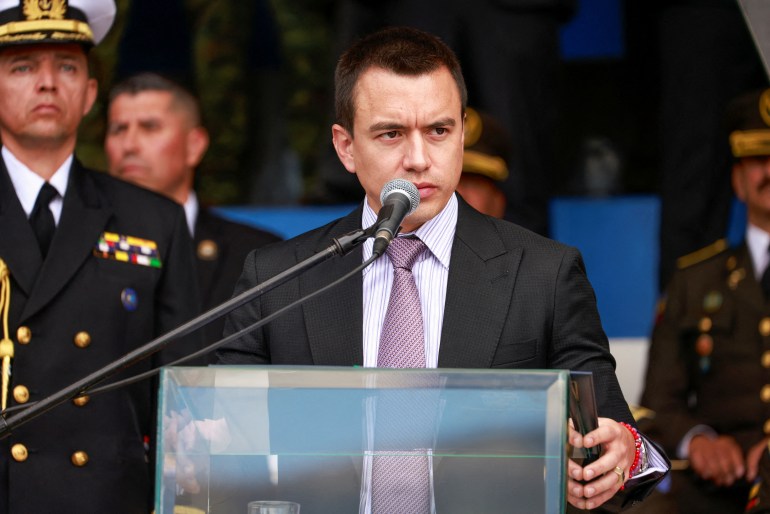
Global cocaine boom
The decline in Ecuador’s security situation has been years in the making. One of the principal drivers behind the crisis is the growth of the global cocaine trade.
In its latest World Drug Report, the United Nations described “a prolonged surge in both supply and demand of cocaine”.
In 2021 alone, an estimated 22 million people consumed the drug, and production reached approximately 2,304 tonnes, marking the seventh straight year of increases.
Experts say Ecuador has played an increasingly prominent role in the drug’s export from Latin America. The country is sandwiched between the two largest cocaine-producing countries in the world, Peru and Colombia.
“Ecuador is a small country in a violent neighbourhood, and it’s become a key part of global narco-trafficking networks,” said Will Freeman, a fellow for Latin America studies at the Council on Foreign Relations, a US-based think tank.
He pointed out that Ecuador’s position on the Pacific coast makes the country prime real estate for export operations seeking to send cocaine abroad.
“Globally, maritime cocaine shipping is on the rise, so it’s no longer moving largely along the Mexico-Central America corridor. It’s increasingly moving through South America’s ports, and Ecuador has important ports. That’s put Ecuador in the eye of the storm,” Freeman explained.
As Ecuador’s prominence in the cocaine trade boomed, so too did its criminal underworld — luring in new forces including prominent Mexican cartels and Balkan criminal gangs.
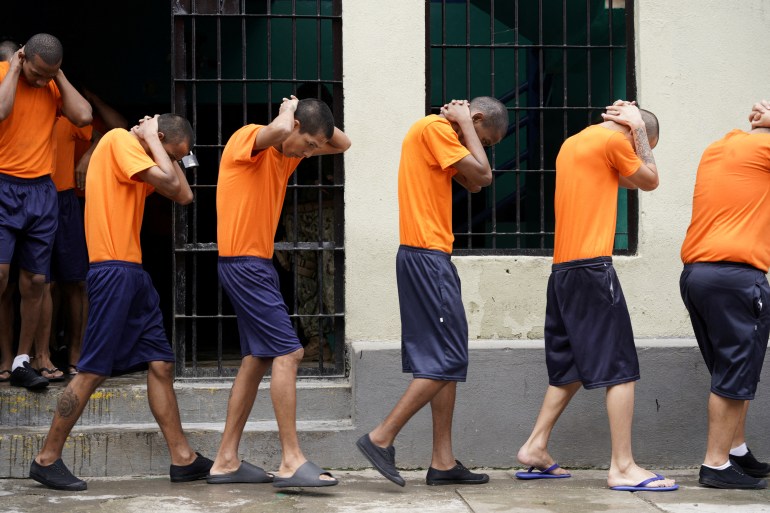
Colombia’s historic peace deal
Another factor that contributed to the instability in Ecuador was a peace deal across the border in Colombia.
For decades, Colombia has been mired in a multi-pronged internal conflict, with government forces, right-wing paramilitary groups, criminal networks and left-wing rebels all fighting for power.
But a breakthrough came in 2016. The largest left-wing group, the Revolutionary Armed Forces of Colombia (FARC), agreed to a deal to disband its armed forces, in exchange for concessions like rural development and social security programmes.
As thousands of FARC fighters laid down their arms, a power vacuum formed. The FARC’s dissolution created an opportunity for other groups to take over its lucrative drug-trafficking routes, particularly along the border.
With gangs and other armed groups jockeying for power, new bursts of violence erupted. Pockets of fighting spilled into neighbouring Ecuador.
Some dissident members of the FARC, disillusioned with the peace deal, even moved their operations to the country.
Corrupt institutions
Despite detaining several high-profile gang leaders, Ecuador has struggled to deliver decisive blows to the criminal networks operating within its borders.
Even imprisonment has not stopped their proliferation. Gangs maintain a presence in many of the country’s 36 prisons: In 2022, the head of the prison agency SNAI estimated that 11,000 of the 32,000 people incarcerated were gang members.
United Nations experts also reported that some parts of Ecuador’s prisons were “self-governed by detainees who are members of criminal organisations”.
Systemic corruption helps to foster those conditions, allowing gangs to operate with relative impunity, according to experts.
“It’s been proven that all the political and judicial structures in the country are corrupt at this point. We can really see that organised crime has their hands really deep into the judicial system,” said Domenica Avila-Luna, an Ecuadorian economist and political analyst at King’s College London.
The gangs have also taken steps to impede the pursuit of justice. Avila-Luna pointed out that, in January, a prosecutor was shot to death in the middle of a high-profile investigation into an attack on a TV station.
Attorney General Diana Salazar indicated she believed organised violence was to blame for the attack.
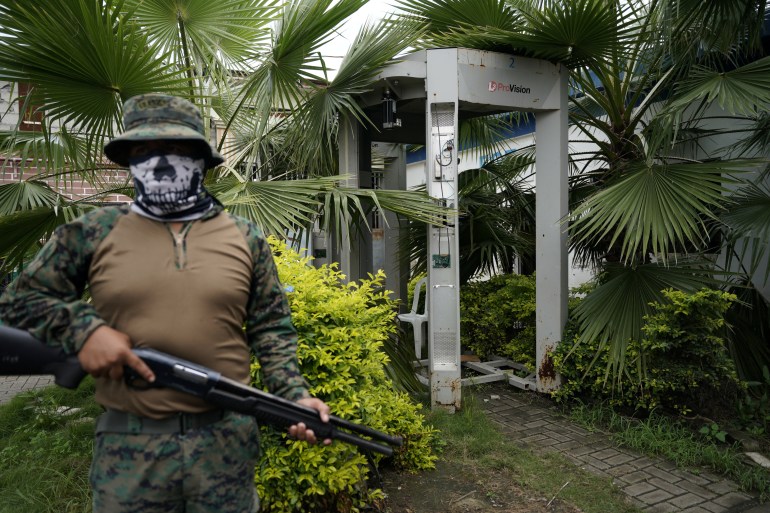
Weakening the justice system
But experts also say that Ecuador’s spike in violence has received a boost from the highest levels of government. A string of presidents, they argue, have weakened the country’s judiciary.
For example, groups like Human Rights Watch have accused former President Rafael Correa of pressuring judges and interfering in the outcome of cases. Correa was ultimately convicted of bribery-related corruption.
His successor, Lenin Moreno, pledged to approach the judiciary differently. “I will never call a magistrate to influence them,” Moreno said upon his inauguration in 2017.
But Moreno decided to eliminate Ecuador’s Ministry of Justice in 2018, replacing it with a different agency, SNAI, that struggled to control the country’s prisons.
Officials in the following administration, under Guillermo Lasso, blamed Ecuador’s spiralling violence partly on Moreno’s decision.
But Freeman at the Council on Foreign Relations said the violence was the result of successive policy choices under all three presidents.
“It’s a combination of weak and co-opted institutions but also an issue of prioritisation,” Freeman explained. He believes the presidents focused on other political goals, neglecting security concerns.
“Correa prioritised his extractive development model, poverty reduction and getting investment from China. Moreno had to deal with COVID and nationwide protests that got very violent. And Lasso prioritised economic reforms.”
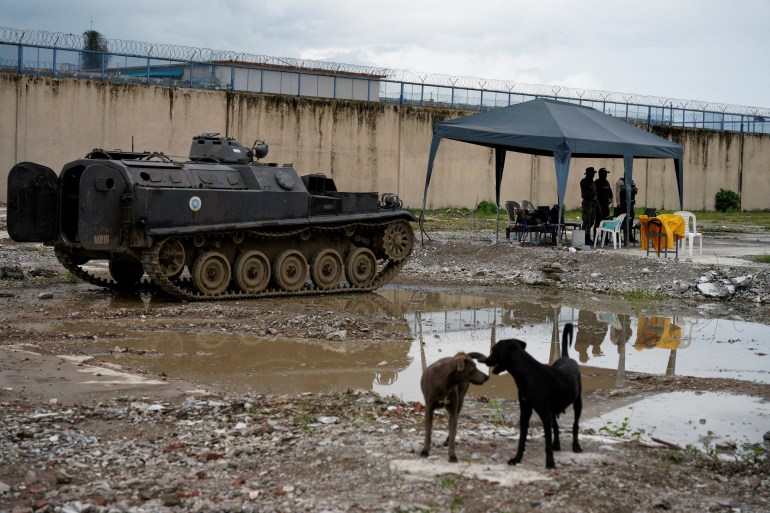
Debilitated by COVID
The COVID-19 pandemic further complicated Ecuador’s security situation. A country of approximately 17 million, Ecuador recorded one of Latin America’s highest rates of COVID-related deaths, with 36,014 reported.
The pandemic also toppled an already staggering economy.
Falling prices for oil, the country’s main export, had left its markets weak. In 2020, as COVID shuttered businesses and forced residents to stay home, Ecuador clocked a decline of 7.5 percent in its gross domestic product (GDP).
Unemployment jumped as a result, and youth in particular struggled to find work. Experts say that criminal networks took advantage of their desperation to build their membership.
“With the pandemic and with the bad governments we’ve had in the last years, institutions and the state as a whole have weakened,” said Avila-Luna.
“There is a lot of poverty — and it increased quite a bit during the pandemic. There are also problems with employment. So criminal organisations found, in prisons and on the streets, places of recruitment for their organisations.”
What next?
Noboa, the current president, now has the unenviable task of attempting to reduce the mushrooming rates of violence.
The youngest president in Ecuador’s modern history, Noboa, 36, won a snap election last October that will see him serve a shortened term of only 18 months.
But his victory came in the shadow of bloodshed: One of his fellow presidential candidates, anticorruption campaigner Fernando Villavicencio, was murdered as he exited a campaign rally.
The violence continued during Noboa’s early days in office. On January 9, he declared an “internal armed conflict” and a 60-day state of emergency.
The declaration designated 22 gangs as “terrorist” organisations, authorising the military to target them. More than 3,600 suspected gang members have been arrested in the weeks since.
By January 25, the rate of daily homicides had been reduced by 67.8 percent, according to local news outlet Primicias. Nevertheless, the murder rate remained on track to match 2023’s record total: From January 1 to 24, 392 people were killed, compared with 391 during the same period last year.
Ecuador has also continued to experience acts of violence that have shocked the public consciousness. Armed gang members have stormed a live TV broadcast, inmates have taken more than 200 prison guards hostage, and 68 suspects were arrested for trying to seize control of a hospital.
Noboa is not the first president to try to address the problem through an emergency proclamation: His predecessor, Lasso, likewise imposed a state of emergency.
But the economist Avila-Luna warned that such heavy-handed tactics are not enough to solve the problem.
“It’s important to recognise that this is only to put out the fires. The president is reacting to regain control of the prisons and to control the attacks through the military forces. But this is not going to solve the root causes of the problem,” Avila-Luna said.
For Freeman, part of the solution lies with Peru and Colombia “doing their part” to address the illicit trade of cocaine. “The world”, he added, needs to do “its part to reduce demand”.
Avila-Luna, meanwhile, acknowledged the entrenched nature of the problem, which touches on poverty, government stability and international cooperation.
“I feel profoundly sad about what’s happening in my country. This is a really complicated problem that’s not easy to solve. I’m not sure there is a clear way out of it at this point,” Avila-Luna said.
“Ecuadorian people are strong, and we want to maintain hope that there is a way to get our country back. Hopefully, this is just a bad chapter in the country’s story.”
